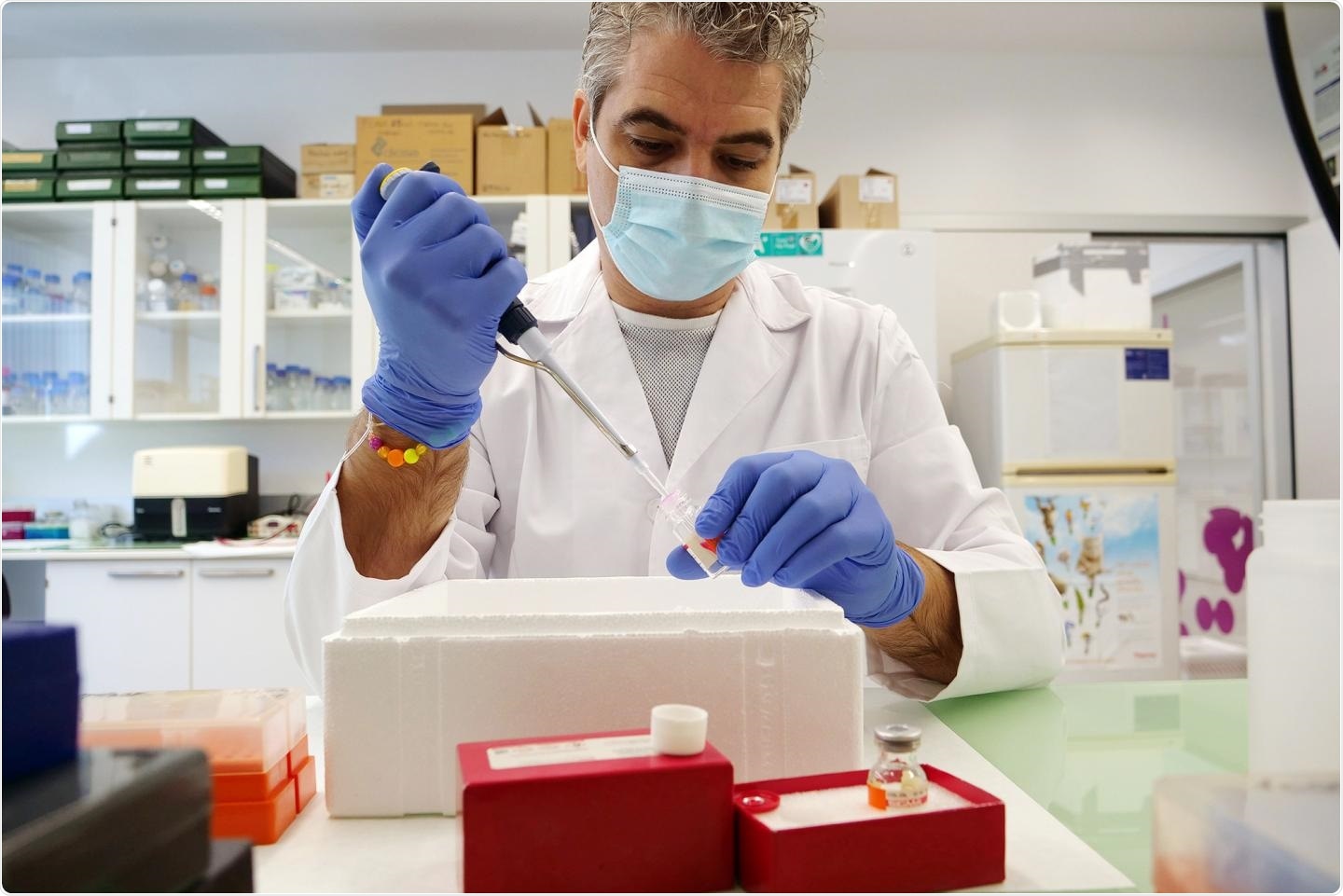Adrián Ruiz-Villalba, a researcher of the Faculty of Science of the University of Malaga (UMA) and also a member of the Andalusian Center for Nanomedicine and Biotechnology (BIONAND) and the Biomedical Research Institute of Malaga (IBIMA), is the first author of a global study that has discovered the heart cells responsible for repairing the damage induced to this vital organ following infarction.

A Adrián Ruiz-Villalba is the first author of an international study that has identified the heart cells in charge of repairing the damage caused to this organ after infarction. Image Credit: University of Malaga.
Recently published in the Circulation—the American Heart Association journal—the study is the first in the world devoted to cardiovascular research.
The “reparative” cells contain a population of cardiac fibroblasts that play a crucial role in producing the collagenous scar needed to inhibit the rupture of ventricular walls. This study, performed in association with investigators from the Center for Applied Medical Research of Pamplona (CIMA) and the University Clinic of Navarra, also shows the molecular mechanisms that stimulate these cells and control their function.
According to the team, this breakthrough will help identify new therapeutic targets and result in the development of targeted treatments to regulate the process of cardiac repair after infarction.
Characterization of reparative cardiac fibroblasts
One of the vital components of the heart are cardiac fibroblasts. These cells play a crucial role in sustaining the mechanics and structure of this vital organ.
Recent studies have shown that fibroblasts do not respond homogeneously to heart injury, so the purpose of our study was to define their heterogeneity during ventricular remodeling and understand the mechanisms that regulate the function of these cells.”
Felipe Prósper, Researcher, Center for Applied Medical Research of Pamplona and University Clinic of Navarra
Prósper continued, “Through single-cell transcriptomics (single-cell RNA-seq analysis) we identified a subpopulation within cardiac fibroblasts that we named Reparative Cardiac Fibroblasts (RCF) for their role after cardiac injury. We verified that, when a patient suffers a heart attack, these RCF activate to provide a fibrotic response that generates a collagenous scar that prevents heart tissue rupture.”
Prósper is also a member of the Cell Therapy Network (TerCel) and the Health Research Institute of Navarra (IdiSNA).
CTHRC1, a protein related to the collagen that is essential for the healing process
At a molecular level, the team has identified that RCF is defined by a special transcriptional profile, that is, a particular information pattern for the expression of the genes that play a role in their cardiac function.
Among the main differential markers of the transcriptome of these cells we identified the CTHRC1 protein (Collagen Triple Helix Repeat Containing 1), a molecule that is essential in the fibrotic response after myocardial infarction. Specifically, this protein participates in the collagen synthesis of the cardiac extracellular matrix and is crucial to the ventricular remodeling process.”
Adrián Ruiz-Villalba, Researcher, University of Malaga
According to Ruiz-Villalba, these outcomes indicate that RCF stimulates the cicatrization of cardiac injuries by separating the CTHRC1 protein. Thus, this molecule could be regarded as a biomarker linked to the physiologic state of an impaired heart and a promising therapeutic target for patients that experienced a myocardial infarction or those who suffer from dilated cardiomyopathy.
The new study falls within the line of research performed on cardiac fibrosis of the “Cardiovascular Development and Angiogenesis” team headed by José María Pérez Pomares, a professor of the Department of Animal Biology of the Faculty of Science of the UMA.
This team analyzes the molecular and cellular mechanisms underlying this type of pathologies by using various animal models and associating with numerous clinical and basic teams, both international and national.
The study titled, “Single-Cell RNA-seq Analysis Reveals a Crucial Role for Collagen Triple Helix Repeat Containing 1 (CTHRC1) Cardiac Fibroblasts after Myocardial Infarction,” is the outcome of five years of collaborative work, which involved over 30 different authors.
Similarly, other R&D&I centers, like NavarraBiomed (Pamplona), Maine Medical Center Research Institute (USA), CeMM Research Centre for Molecular Medicine of the Austrian Academy of Sciences (Vienna), and KU Leuven (Belgium), have participated in the research.
Source:
Journal reference:
Ruiz-Villalba, A., et al. (2020) Single-Cell RNA-seq Analysis Reveals a Crucial Role for Collagen Triple Helix Repeat Containing 1 (CTHRC1) Cardiac Fibroblasts after Myocardial Infarction. Circulation. doi.org/ 10.1161/CIRCULATIONAHA.119.044557.